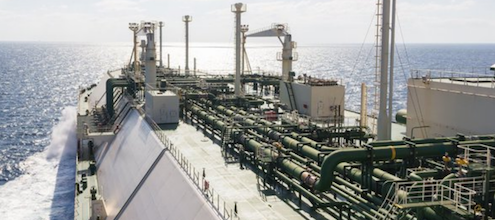
Does the World Need More Growth (read: Technology)?
The Ecofiscal Commission believes that our economies can continue to grow, even as we improve the environment by polluting less and using our natural resources more efficiently.
We recognize that this position rubs up against a live and interesting debate often characterized as “growth vs no growth”. While the Ecofiscal Commission’s work does not address this debate explicitly, the conversation is certainly relevant to the issues we tackle. Commissioner Dick Lipsey is a renowned expert in the field of economics and innovation. This short blog series captures his thoughtful insights on the question: is economic growth sustainable on a finite planet?
Hungry for Technology
Economic growth has raised the living standards in much of the world to levels undreamed of through the 10,000 years since people first left their hunter gatherer existence. But is continued growth really possible? Is it desirable? Will we not run out of resources or pollute ourselves out of existence? The first worry is a myth with respect to resources in general (although not for some individual resources), while the second is certainly possible, although by no means necessary, as the Ecofiscal commission has repeatedly argued.
Why does the world need more growth?
First, feeding the world’s population estimated to stabilise at about 10-12 billion late in this century requires further advances in the technology of food production. Early in the 19th century it seemed impossible for two billion people to be adequately fed. Today, nearly 6 billion people are fed, and agricultural surpluses, not shortages, are the problem in major food producing areas such as North America and the EU. The green revolution brought vast increases in production to developing countries, allowing them to feed rapidly growing populations and sometimes even to export surplus food. Technologies already in early stages of development, especially aquaculture and biotechnology, are capable of feeding 10-12 billion people once they are fully developed ̶ at least if we do not destroy our productive ability through human-induced climate change.
The world has reason to give thanks that no earlier-day anti-growth, anti-technology advocate was able to persuade national governments to freeze agricultural technologies at their 1945 levels.
If that had happened, the disasters of famine, plagues and pestilence that were famously predicted for the whole world by the Reverend Thomas Malthus early in the 19th century would long ago have become endemic.
Technology, Innovation, and Social Equity
Second, the best hope for saving the environment is through further growth-inducing technological change. Most new technologies use less of all inputs per unit of output than do the older technologies that they replace. Technological change thus tends to result in increasingly economical use of the world’s resources. Furthermore, many newer technologies are much less polluting than many older technologies. Until the end of communism, a trip from Western to Eastern Europe, where 1950s technologies produced environmental degradation on a vast scale, made this point strikingly to even the most casual observer. Much of the increasing environmental friendliness of newer technologies happens naturally in the normal course of following economic incentives to make technologies produce at lower cost and greater efficiency. When normal economic incentives do not produce this result, public policy can create the incentives that pressure technological change to increase environmental friendliness.
Third, the only way for the citizens of the poorer countries to raise their living standards to anything approaching those that we in advanced countries accept as normal is through further growth-creating technological change. To use present-day technologies to raise all the world’s citizens to middle class living standards common in the West today would be impossible because of the pollution and environmental degradation it would create.
Fourth, further growth carries the only possible route to higher living standards for those who live in the West. We still worry about such issues as poverty for our lower income groups, generally inadequate education, and medical and hospital care which becomes increasingly difficult to fund. These problems are much easier to deal with in a growing rather than a static economy. Today’s level of Canadian expenditure on health care, which is clearly inadequate for fully satisfactory services, and which is being curtailed by hard-pressed governments, would be easily handled in an economy with a GDP of twice our current level ̶ and two percent growth produces that doubling in just over 35 years. Compared with a static society it is easier to achieve equity and equality of opportunity and to prevent the society settling into a permanent rich/poor divide than in a society that is growing and constantly changing.




Comments are closed.